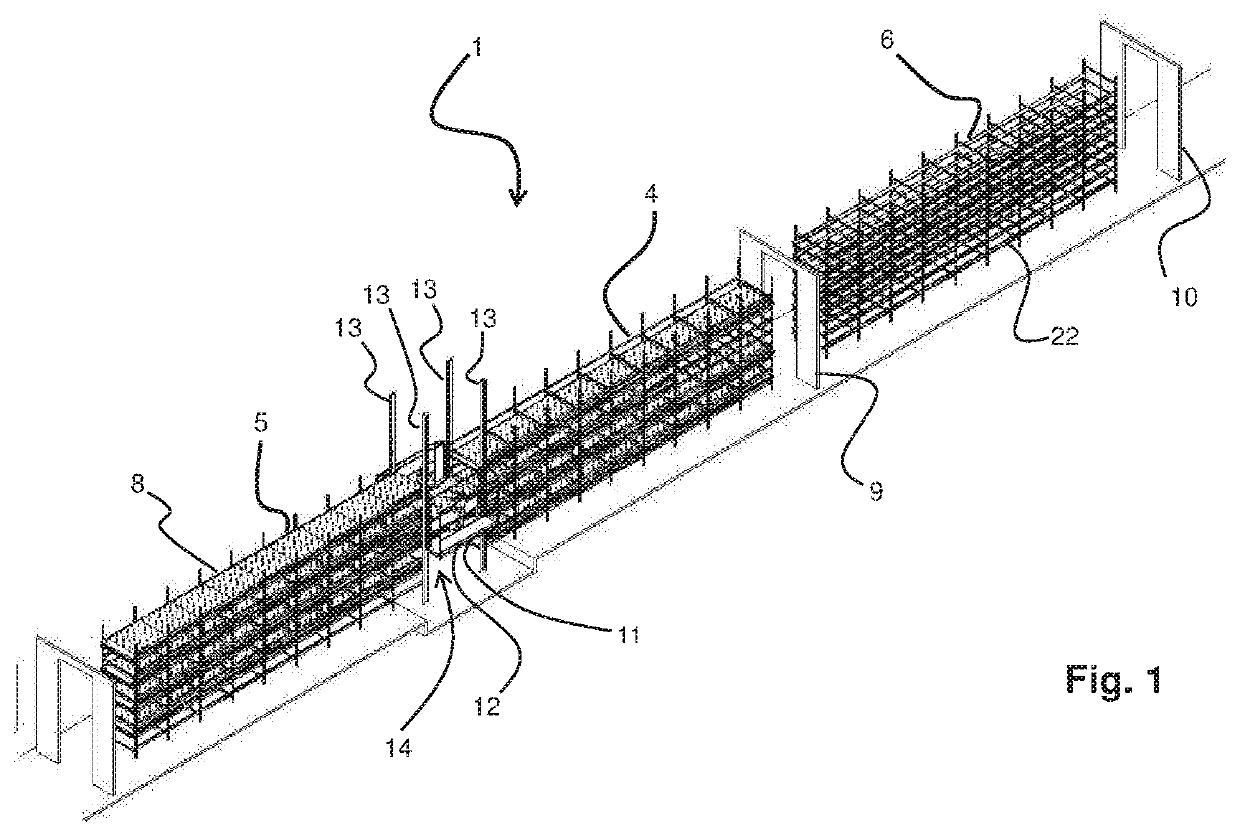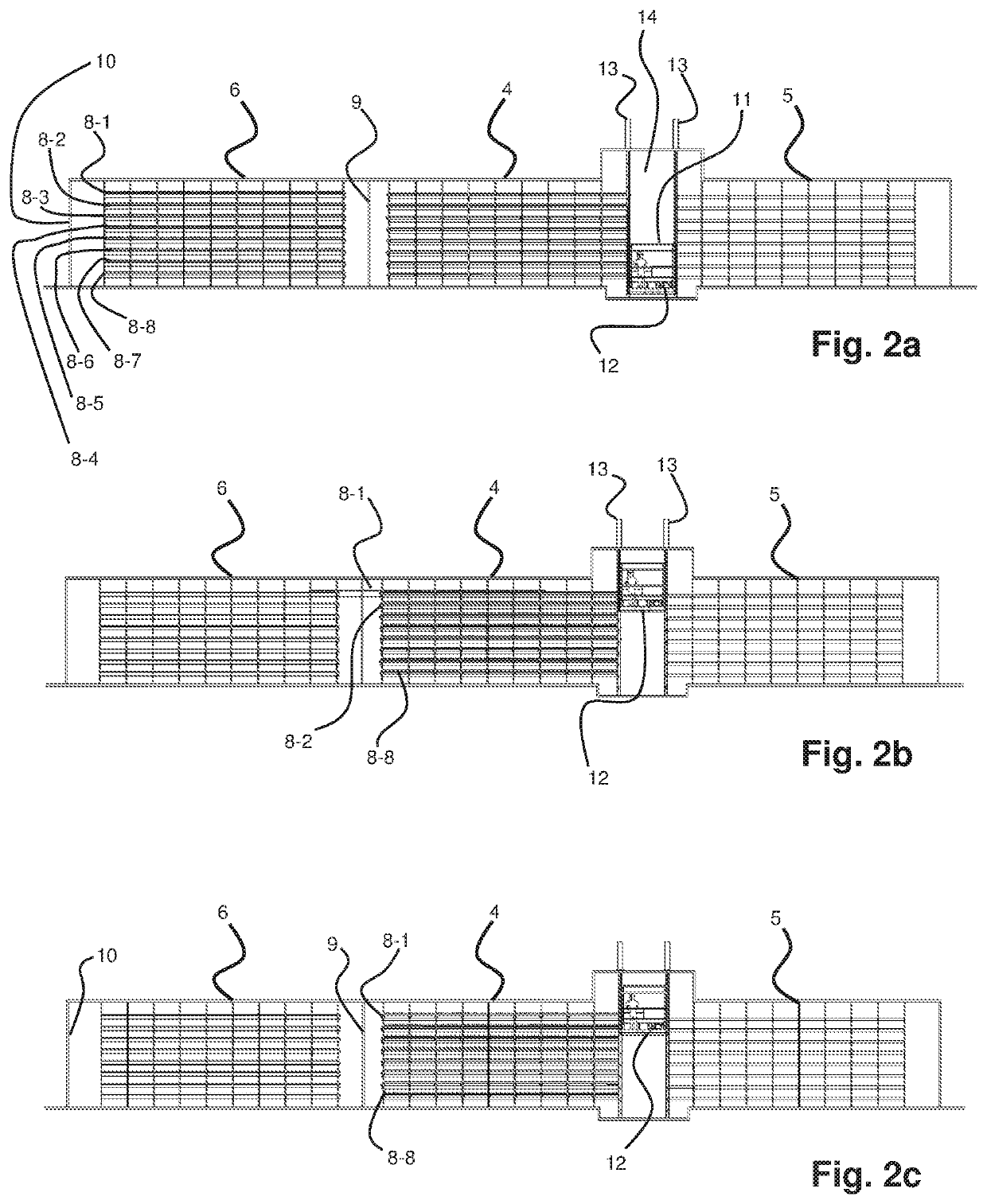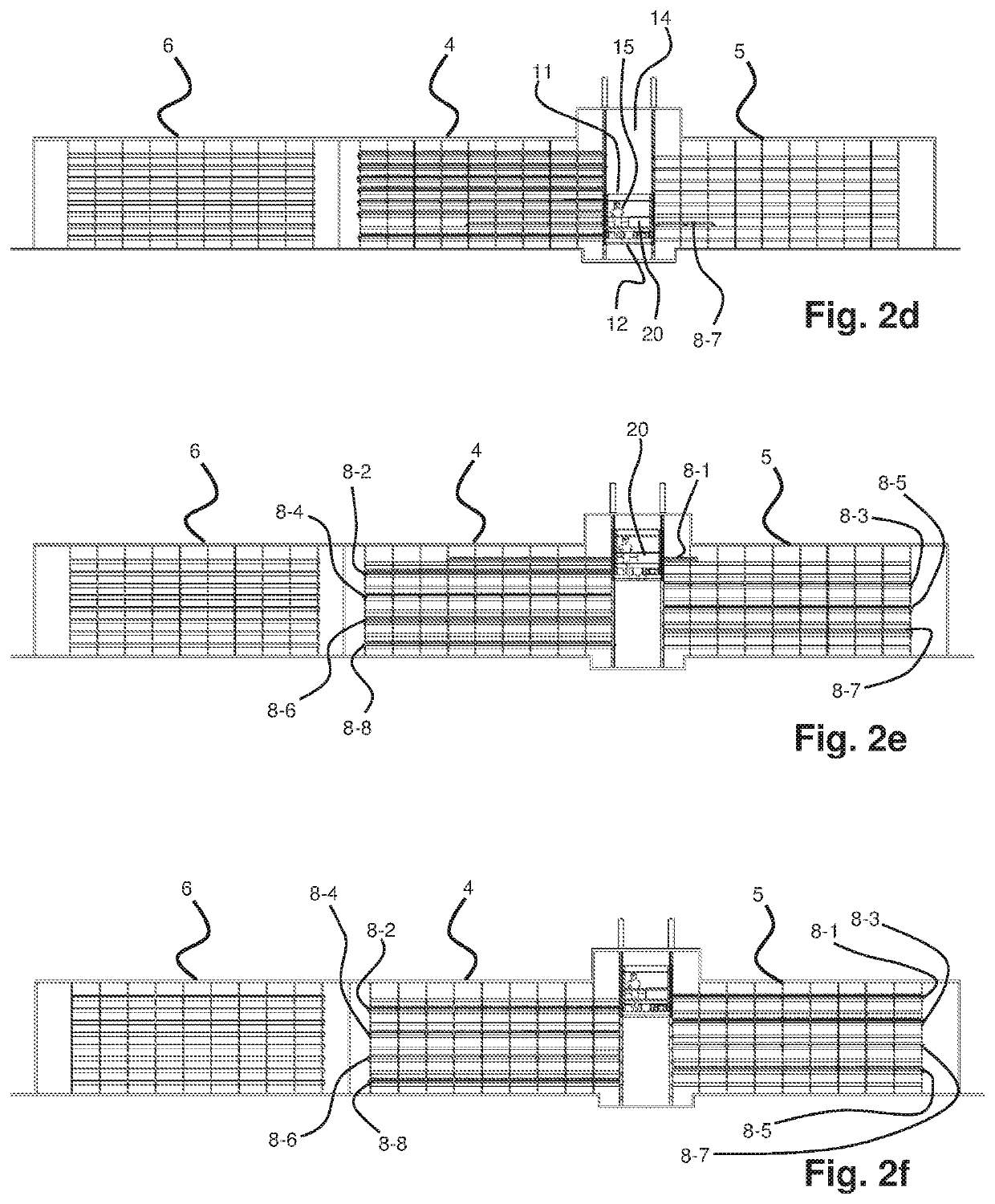[0008]It is an object of the present invention to ameliorate the disadvantages identified above, and to provide a cultivation arrangement and method that allows efficient use of space for enabling effective condition management, while also improving harvesting conditions.
[0010]The invention enables the packages to be moved from the first to the second rack, or vice versa, past the platform. While the packages are moved past the platform, the operator has all the space he desires above the package to perform the harvesting in a manner that is physically less demanding. Moreover, because the operator can bend over the package, the size of the mushrooms in the package can be judged much better as compared to the situation wherein mushrooms are to be harvested directly from the packages in the racks. In conventional harvesting methods of this type, the size must be judged by the operator by observing the mushrooms from aside while the package is relatively dark in view of the arrangement of the rack with stacked packages. In the present invention, the packages move past the platform while being well illuminated, providing the desired working and movement space to perform the task.
[0015]In accordance with some embodiments, the actuator comprises one or more controls for setting a movement speed for moving the respective carriage. As will be appreciated, this allows the working conditions for accurate and efficient harvesting to be manageable. The controls may further comprise controls for moving the platform in a vertical direction to set the desired height. In accordance with embodiments, the operator platform is connected to a moveable structure cooperating with vertical guiding members arranged on one or more of the first and second rack, for enabling the vertical movement of the platform. Moreover, in accordance with some embodiments, the moveable structure comprises a first and a second operator platform being arranged on either side of the working space. As may be appreciated, this enables to work on the cultivation packages from two different sides of the package, to achieve doubled efficiency.
[0017]As already briefly mentioned above, after spawning and before harvesting, the cultivation packages may reside in one single rack wherein a package is present e.g. at each defined height in the rack. This provides a compact stacking of the packages. This is advantageous for example for the cultivation of mushrooms such as champignons during this phase. The packages do not need to be very accessible during this phase, and a compact stacking allows reduces the required space for keeping the racks under the right conditions. In accordance with some embodiments, the arrangement therefore further comprises a third rack arranged adjacent and aligned with the first rack, the third rack comprising a plurality of further support structures arranged at respective support heights for supporting cultivation packages at the plurality of heights in the third rack, and such that the support heights of the third rack are aligned with the support heights of the first rack, the arrangement further comprising a transfer unit for moving cultivation packages from the third rack into the first rack. The third rack may be a separate rack that may be kept in a separate room during growth, i.e. isolating it for different ambient condition control for the third rack. In such an embodiment, when the packages with the horticultural products (e.g. champignons) are ready to be moved to the first rack, the transfer unit may be connected to each of the cultivation packages, and the packages may be hauled into the first rack. The manner in which this is done depends of the transfer unit applied. For example, the cultivation packages may already be supported in carriages in the third rack, or alternatively the packages may be differently supported (e.g. on a cloth or canvas or on a plate-like construction) and pulled into a carriage of the first rack. Also the packages may be pulled into the first rack either one-by-one, two or more together, or all at once. In some embodiments, for providing the transfer unit, one or more of the support structures of the first rack each comprise a pulley comprising a windable longitudinal pulling member and a coupling member connected to the pulling member, the pulling member having a length for enabling spanning the first rack in longitudinal direction such as to enable coupling of the coupling member to a cultivation package in the third rack, the pulley being operable for pulling the cultivation package into the support structure of the first rack. This may include a winch or rollable spool or the like.
[0019]In accordance with some embodiments, the method further comprises the steps of: cultivating, for a first duration of time, the horticultural products in cultivation packages in a third rack comprising a plurality of further support structures arranged at respective support heights, wherein the support heights of the third rack are aligned with the support heights of the first rack; aligning the third rack with the first rack; and moving, using a transfer unit, the cultivation packages from the third rack into the first rack, for enabling cultivation of the horticultural products in either one of the first and the second rack for a second duration of time. As explained, in the third rack, the stacking may be more compact as access to the packages is not frequently required and a more compact stacking takes less space of which the ambient conditions need to be controlled.
 Login to View More
Login to View More  Login to View More
Login to View More 


